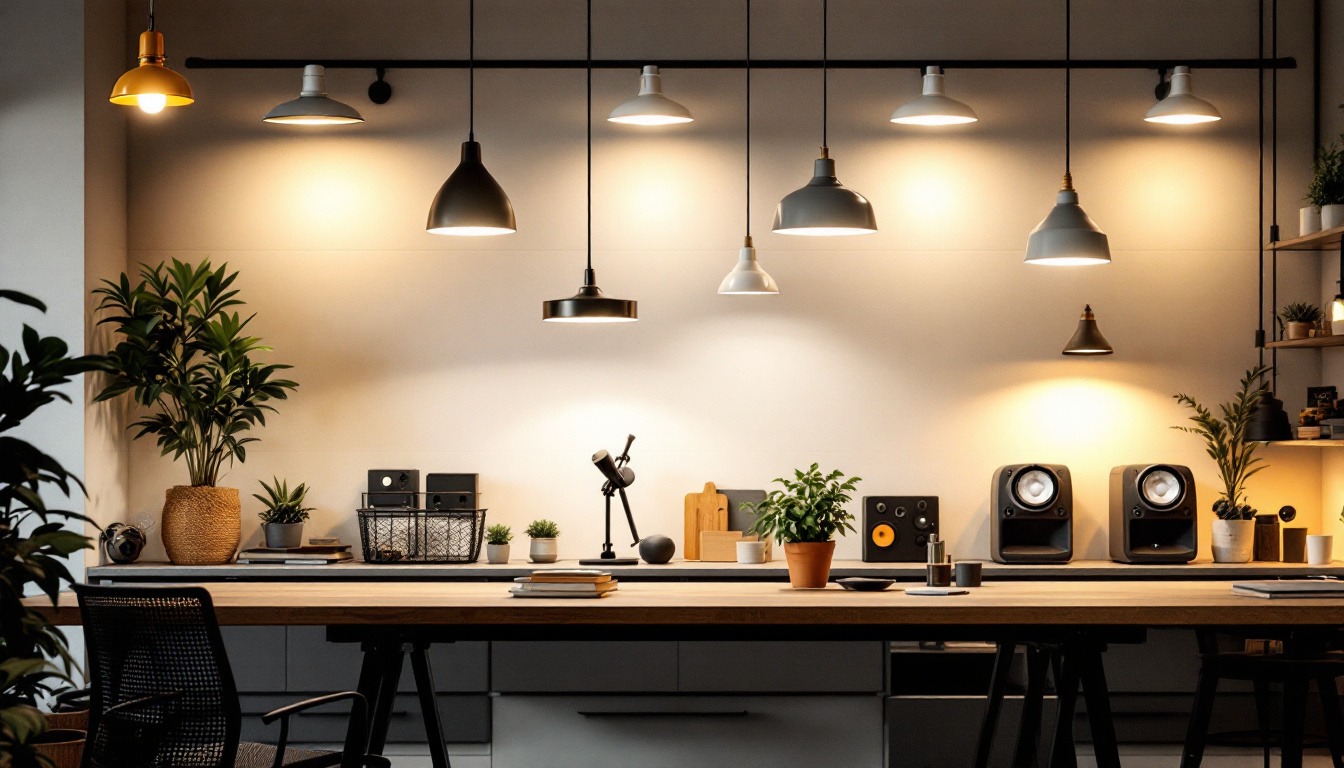
Office lighting is far more than a matter of aesthetics; it directly impacts productivity, employee well-being, and energy efficiency. For lighting contractors, designing and installing optimal office lighting requires a deep understanding of how light affects the human body and work performance. The right lighting can create an inviting atmosphere that fosters creativity and collaboration, while poor lighting can lead to a dreary environment that stifles innovation and motivation.
Studies have shown that poor lighting can lead to eye strain, headaches, and decreased concentration, which ultimately reduce workplace efficiency. Conversely, well-designed lighting enhances mood, alertness, and overall job satisfaction. As contractors, the challenge lies in balancing functionality, comfort, and sustainability within budget constraints. Furthermore, the integration of smart lighting technologies can provide dynamic solutions that adjust brightness and color temperature throughout the day, mimicking natural light patterns and supporting the circadian rhythms of employees.
Several factors must be considered when selecting and installing lighting systems for office environments. These include the type of work being performed, the layout of the space, natural light availability, and the preferences of the occupants. Additionally, compliance with industry standards such as the Illuminating Engineering Society (IES) guidelines and local building codes is essential to ensure safety and effectiveness. The choice of light fixtures also plays a crucial role; for instance, LED lighting is not only energy-efficient but also offers a range of color temperatures that can be tailored to different tasks, from focused work to collaborative discussions.
Moreover, the psychological effects of lighting cannot be overlooked. Warm lighting can create a cozy, welcoming environment, ideal for areas where employees gather for meetings or breaks, while cooler lighting can enhance focus in workstations. The strategic placement of lighting fixtures can also minimize shadows and glare, which are common distractions in office settings. By considering these elements, lighting contractors can create spaces that not only meet functional requirements but also promote a positive and engaging workplace culture, ultimately leading to higher retention rates and employee satisfaction.
Effective office lighting typically involves a layered approach, combining ambient, task, and accent lighting. Each type serves a distinct purpose and contributes to a balanced lighting environment.
Ambient lighting provides the general illumination necessary for overall visibility. It is usually achieved through ceiling-mounted fixtures such as LED panels, troffers, or recessed lights. The goal is to create uniform light distribution that reduces shadows and glare.
For office spaces, a recommended illuminance level ranges between 300 to 500 lux, depending on the specific tasks and areas. LED technology is often preferred for ambient lighting due to its energy efficiency, long lifespan, and low maintenance requirements. Additionally, the color temperature of ambient lighting can significantly influence the mood and productivity of employees. Warmer tones can create a cozy atmosphere, while cooler tones may enhance alertness and focus, making it essential to select the right hue based on the office’s purpose and the time of day.
Task lighting focuses on illuminating specific work areas to enhance visual clarity for detailed activities such as reading, writing, or computer work. Desk lamps, adjustable fixtures, and under-cabinet lights are common examples.
Proper task lighting reduces eye strain and improves accuracy. It should be adjustable to accommodate individual preferences and avoid creating shadows or glare on screens and work surfaces. Moreover, incorporating features such as dimmable options can further enhance the flexibility of task lighting, allowing employees to tailor the brightness according to their needs throughout the day. This adaptability is particularly beneficial in shared workspaces, where multiple users may have different lighting requirements for their tasks.
While not essential for functionality, accent lighting adds depth and visual interest to office interiors. It highlights architectural features, artwork, or branding elements, contributing to a pleasant and motivating atmosphere.
Contractors should ensure accent lighting complements the overall scheme without causing distractions or discomfort. The strategic placement of accent lights can also influence the perception of space, making smaller areas feel larger or creating cozy nooks for collaboration and relaxation. Incorporating adjustable accent lighting can allow for dynamic changes in the office ambiance, supporting various activities from formal meetings to informal brainstorming sessions, thus enhancing the overall employee experience.
Beyond brightness levels, the quality of light plays a crucial role in workplace effectiveness. Two primary attributes to consider are color temperature and color rendering index (CRI).
Measured in Kelvins (K), color temperature defines the warmth or coolness of light. Cooler temperatures (4000K to 5000K) mimic daylight and are generally preferred in office settings because they promote alertness and focus. Warmer tones (2700K to 3000K) may be suitable for relaxation areas or conference rooms.
Lighting contractors should select fixtures that offer appropriate color temperatures to align with the intended use of each space. For instance, incorporating adjustable lighting solutions can provide flexibility, allowing employees to tailor their environment according to their specific tasks. This adaptability can foster a more personalized workspace, enhancing overall satisfaction and productivity. Moreover, research indicates that exposure to natural light can significantly boost mood and energy levels, further emphasizing the importance of choosing the right color temperature in design.
CRI measures how accurately a light source reveals colors compared to natural light. A CRI of 80 or above is recommended for office environments to ensure colors appear natural and reduce visual fatigue.
High-CRI LED fixtures are widely available and should be prioritized to enhance visual comfort and aesthetic appeal. Additionally, the choice of lighting can influence the perception of space; for example, high-CRI lighting can make a small office appear larger and more inviting by accurately showcasing the colors of the walls and furnishings. Furthermore, in creative industries, where color accuracy is paramount, investing in lighting with a high CRI can lead to better design outcomes and increased creativity among team members. By understanding and implementing these lighting principles, organizations can create an environment that not only supports productivity but also fosters a sense of well-being among employees.
Modern office lighting design must prioritize energy efficiency to reduce operational costs and environmental impact. Lighting contractors play a pivotal role in recommending and installing systems that meet these goals.
LED lighting has revolutionized office illumination by offering significant energy savings, durability, and design flexibility. When combined with smart controls such as occupancy sensors, daylight harvesting, and programmable dimming, energy consumption can be further minimized.
Implementing these technologies not only benefits building owners but also aligns with increasingly stringent energy codes and green building certifications like LEED and WELL.
Maximizing the use of natural light reduces reliance on artificial lighting during daytime hours. Contractors should collaborate with architects and interior designers to incorporate daylight-responsive controls and ensure glare is controlled through shading or diffusing solutions.
This approach enhances occupant comfort while delivering substantial energy savings.
Successful office lighting installation demands meticulous planning and execution. The following checklist highlights critical steps to ensure optimal outcomes:
Lighting contractors must stay informed about innovations shaping the future of office illumination. These trends offer opportunities to deliver cutting-edge solutions that enhance occupant experience and sustainability.
HCL systems adjust light intensity and color temperature dynamically throughout the day to support circadian rhythms. This approach can improve sleep quality, mood, and productivity by mimicking natural daylight patterns.
Implementing HCL requires advanced controls and tunable LED fixtures, representing an exciting frontier in office lighting design.
Wireless lighting controls integrated with the Internet of Things (IoT) enable real-time monitoring, predictive maintenance, and personalized lighting settings. These smart systems enhance energy management and user comfort while simplifying installation.
Eco-conscious clients increasingly demand lighting solutions that incorporate recyclable materials and minimize waste. Contractors can differentiate themselves by sourcing environmentally friendly products and facilitating responsible disposal of old fixtures.
For lighting contractors, mastering the art and science of office lighting is essential to meet client expectations and regulatory demands. By understanding the interplay of light quality, energy efficiency, and human factors, contractors can design and install lighting systems that foster productive, healthy, and sustainable workplaces.
Adhering to best practices, leveraging emerging technologies, and maintaining clear communication with clients will ensure successful projects and long-term satisfaction. Ultimately, the best office lighting is one that seamlessly supports the people who work under it every day.
Ready to elevate your office lighting projects to new heights of efficiency and design? Look no further than LumenWholesale for a superior selection of spec-grade lighting products. With our commitment to quality and affordability, you can trust us to supply the best lighting solutions that meet and exceed industry standards. Say goodbye to inflated markups and hello to unbeatable wholesale prices, complemented by the convenience of free shipping on bulk orders. Don’t compromise on quality or cost—choose LumenWholesale for your lighting needs and make every project shine. Discover the difference today by visiting our extensive collection at Wholesale Lighting at the Best Value.

Discover essential best practices for lighting contractors when working with 4 LED fixtures.

Discover how utility light fixtures can enhance your business’s profitability.

Discover how dimmable high bay lighting is transforming spaces with real-world success stories from lighting contractors.

Discover the latest trends in ceiling shop lights that every lighting contractor should know.